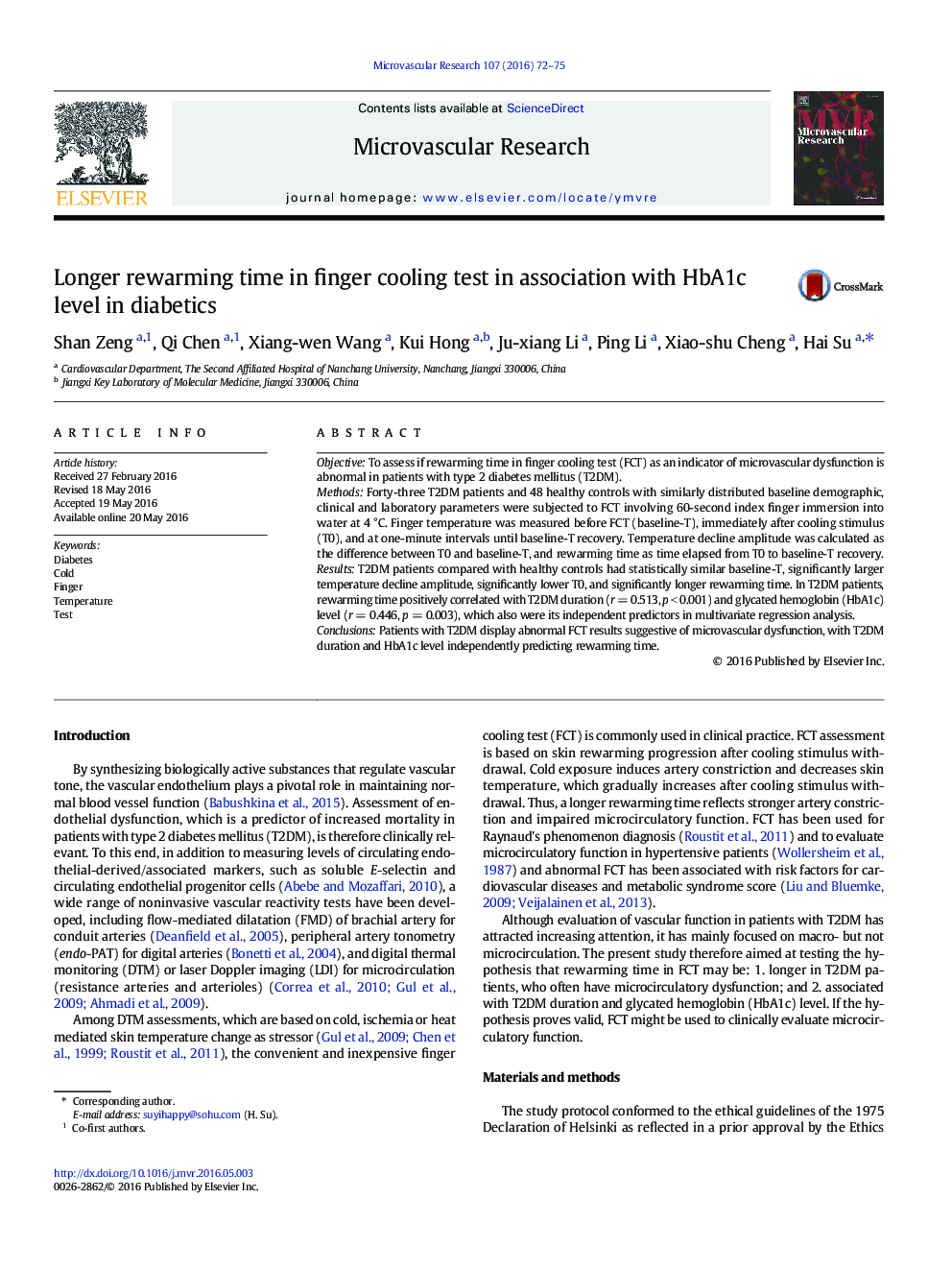| Article ID | Journal | Published Year | Pages | File Type |
|---|---|---|---|---|
| 1994681 | Microvascular Research | 2016 | 4 Pages |
•Finger cooling test (FCT) may reflect the microvascular function.•The re-warming time was significantly longer in T2DM patients compared with healthy subjects.•The re-warming time was positively correlated with T2DM duration and glycated hemoglobin (HbA1c) level.•T2DM duration and HbA1c were two independent predictors of the long re-warming time in T2DM patients.
ObjectiveTo assess if rewarming time in finger cooling test (FCT) as an indicator of microvascular dysfunction is abnormal in patients with type 2 diabetes mellitus (T2DM).MethodsForty-three T2DM patients and 48 healthy controls with similarly distributed baseline demographic, clinical and laboratory parameters were subjected to FCT involving 60-second index finger immersion into water at 4 °C. Finger temperature was measured before FCT (baseline-T), immediately after cooling stimulus (T0), and at one-minute intervals until baseline-T recovery. Temperature decline amplitude was calculated as the difference between T0 and baseline-T, and rewarming time as time elapsed from T0 to baseline-T recovery.ResultsT2DM patients compared with healthy controls had statistically similar baseline-T, significantly larger temperature decline amplitude, significantly lower T0, and significantly longer rewarming time. In T2DM patients, rewarming time positively correlated with T2DM duration (r = 0.513, p < 0.001) and glycated hemoglobin (HbA1c) level (r = 0.446, p = 0.003), which also were its independent predictors in multivariate regression analysis.ConclusionsPatients with T2DM display abnormal FCT results suggestive of microvascular dysfunction, with T2DM duration and HbA1c level independently predicting rewarming time.
